June 17, 2024
Permaculture Design: Raised Beds and Food Forest
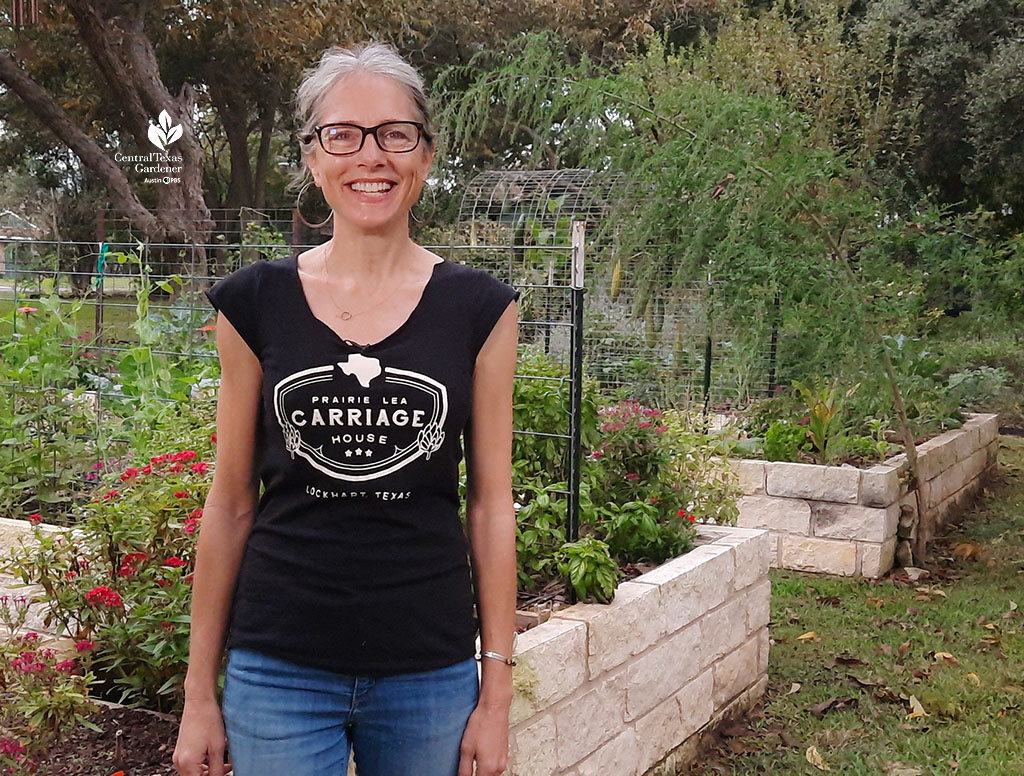
“I started out wanting to grow food for my husband and I, and then I figured out I enjoy growing the food for the insects and the bees and the butterflies the most,” Lockhart gardener Donna Daniels told us last November.
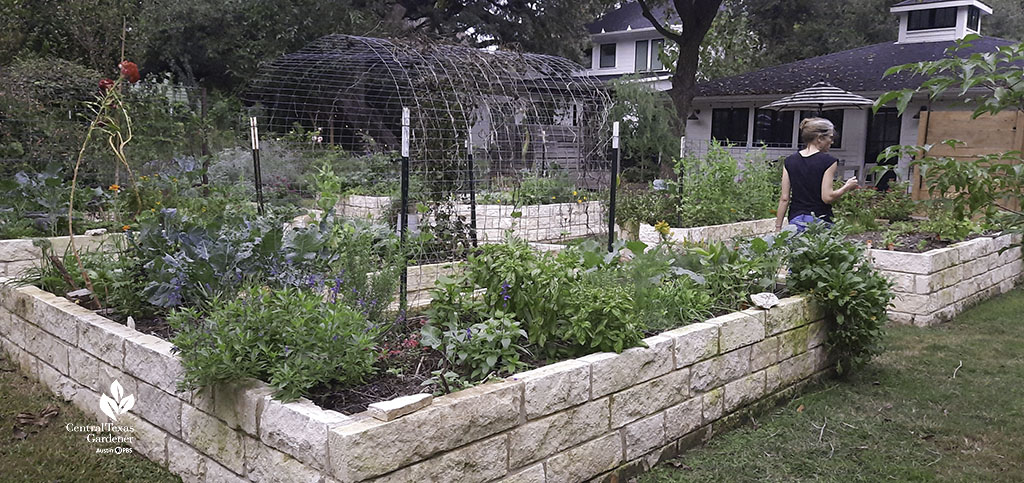
Gardening was new to her, though, when she and husband Len Gabbay scooted out of Austin to Lockhart and a charming home built in 1888. They renovated its old carriage house into a lovely B&B, Prairie Lea Carriage House.
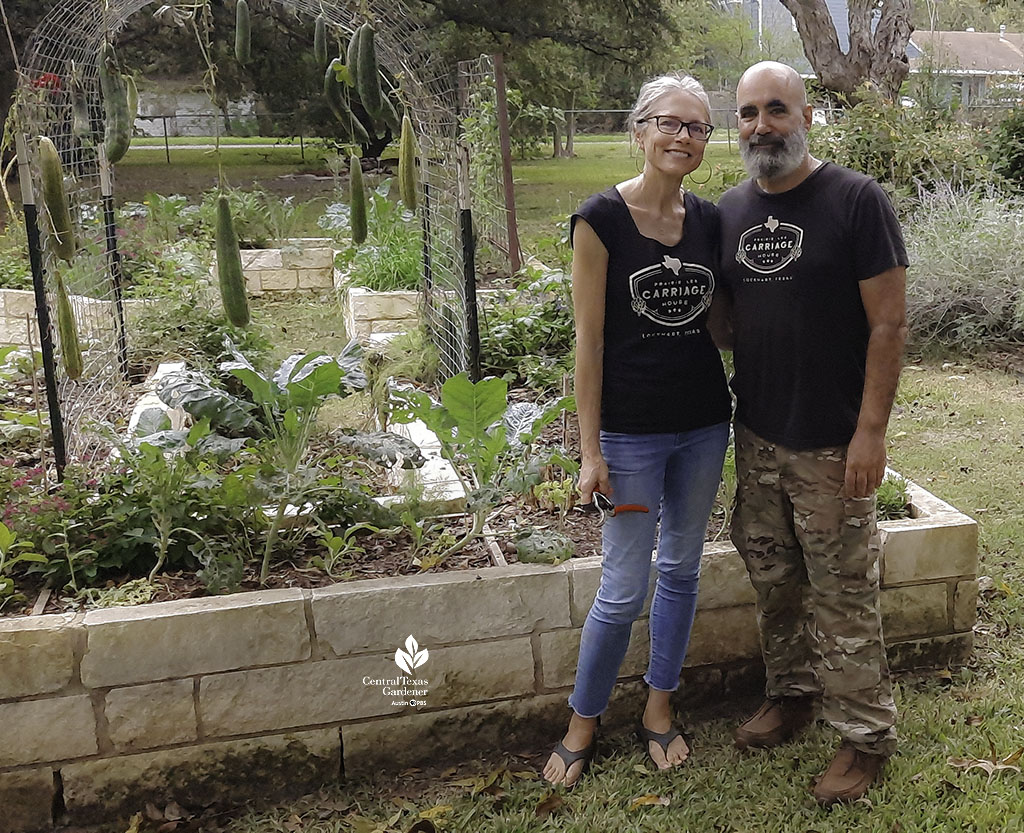
Raised limestone beds were already in place, but they also wanted gardens in a spot that had been a concrete pad.
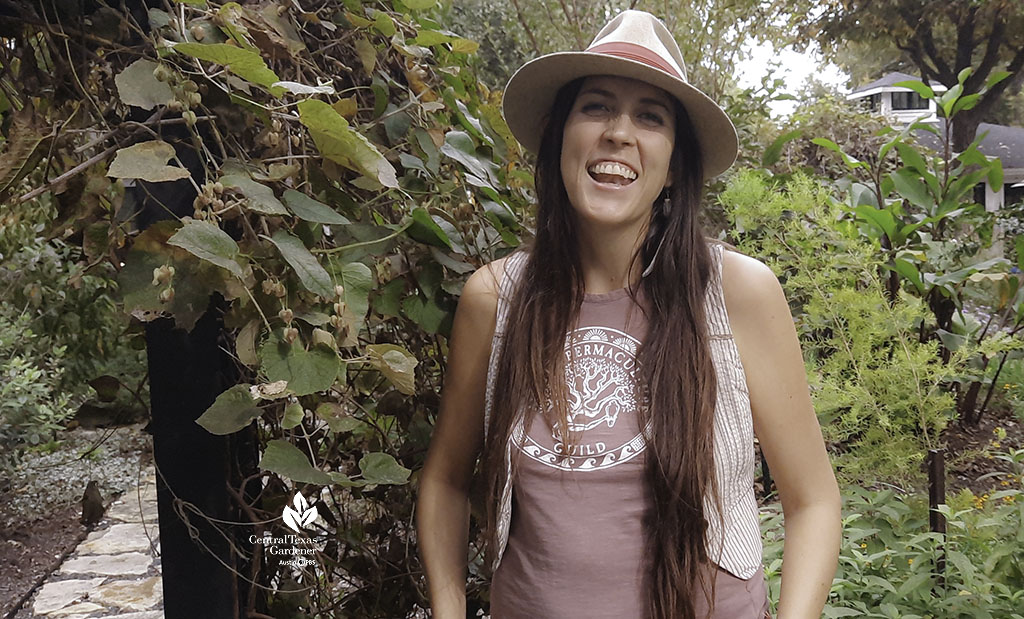
So, they reached out to Taelor Monroe, who they’d met a garden talk in Austin. Taelor’s the owner and co-director of the Austin Permaculture Guild with Caroline Riley and founder of brand new The Cosmos Ranch Foundation, a new location for APG and a community healing venue.
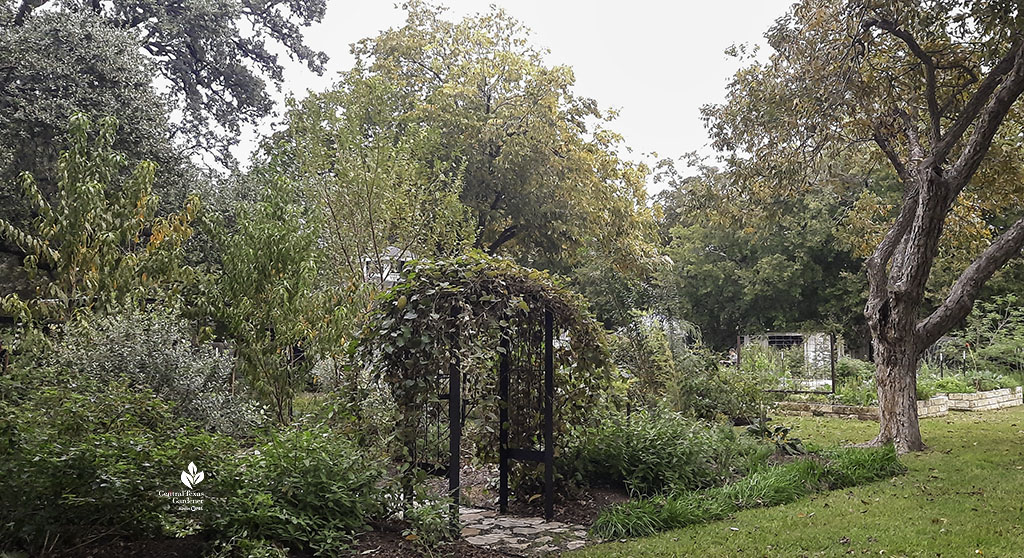
Working around historic live oak trees and established pecans, Taelor designed a food forest of fruiting trees and shrubs, berries, vines, and food and flowers that nurture families and wildlife.
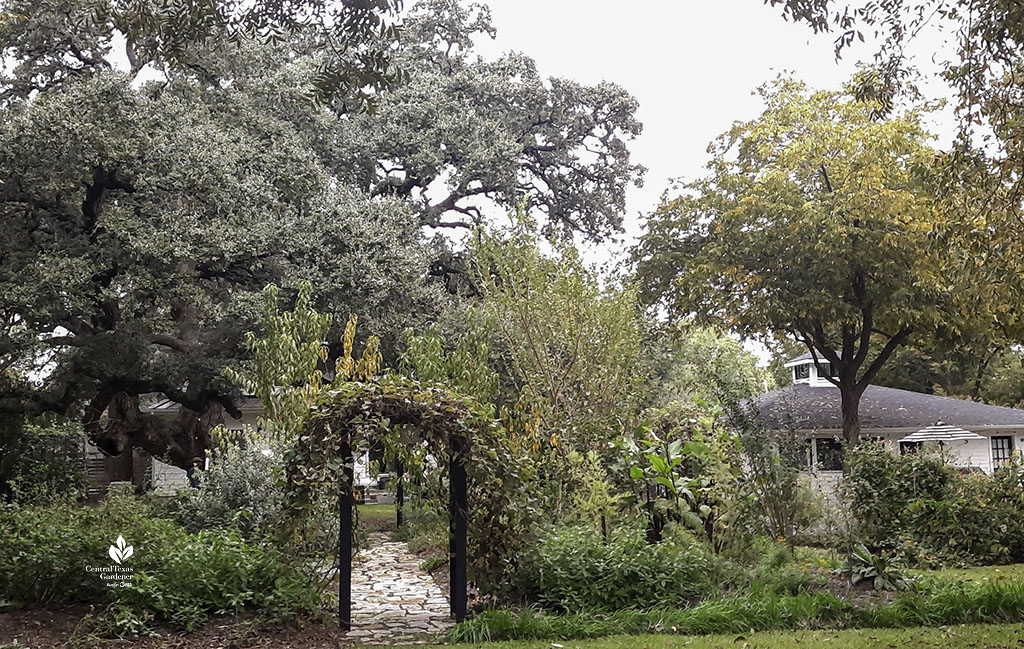
“Permaculture really focuses on a lot of perennial food systems so that it’s not as much labor. Fruit trees do take time, of course, to establish, but once they’re established, they’re just producing food for you. Thinking about those specific plants that are going to keep producing without you having to replant every season are really great,” she told us. Perennials include yarrow, comfrey, culinary herbs, asparagus, artichokes, and perennial leeks, chives, and onions. There are also asters, Mexican honeysuckle, turk’s cap, and salvias.
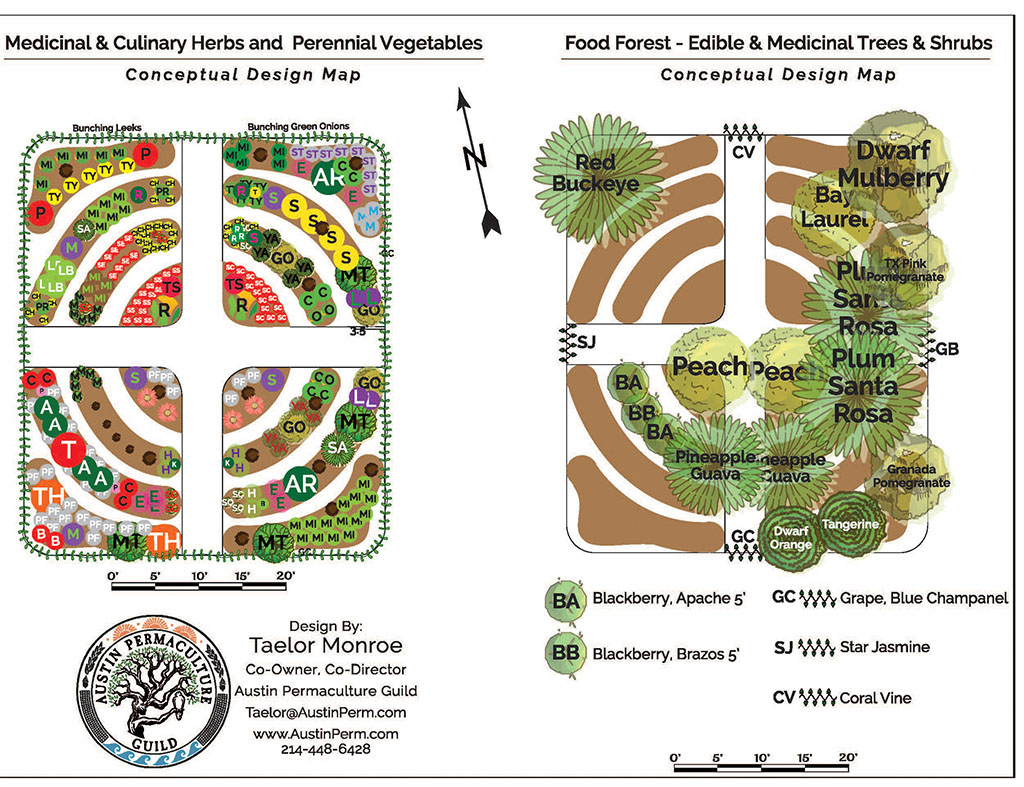
Here’s her partial starting point plant lists for the food forest and raised beds.
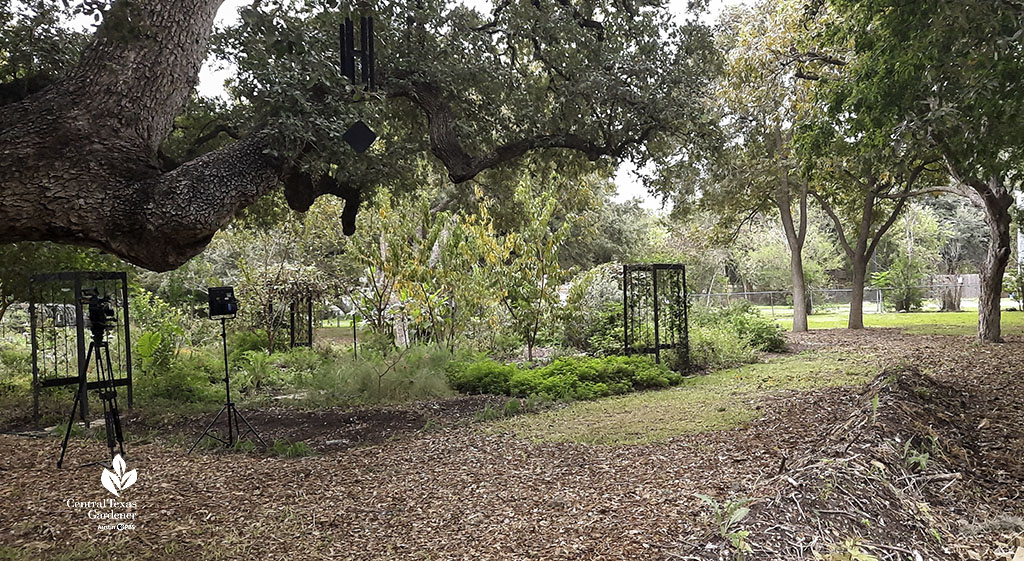
Taelor also focused on flood control, since every heavy rainfall sent water swooshing down the yard, eroding topsoil along the way. She designed the food forest with berms (raised areas) and swales (depressed areas) to catch, direct, and infiltrate water. Along the property, she piled up twigs, branches, leaves, and other decaying plant matter to create Hügelkultur beds, a time-honored resourceful planting technique.
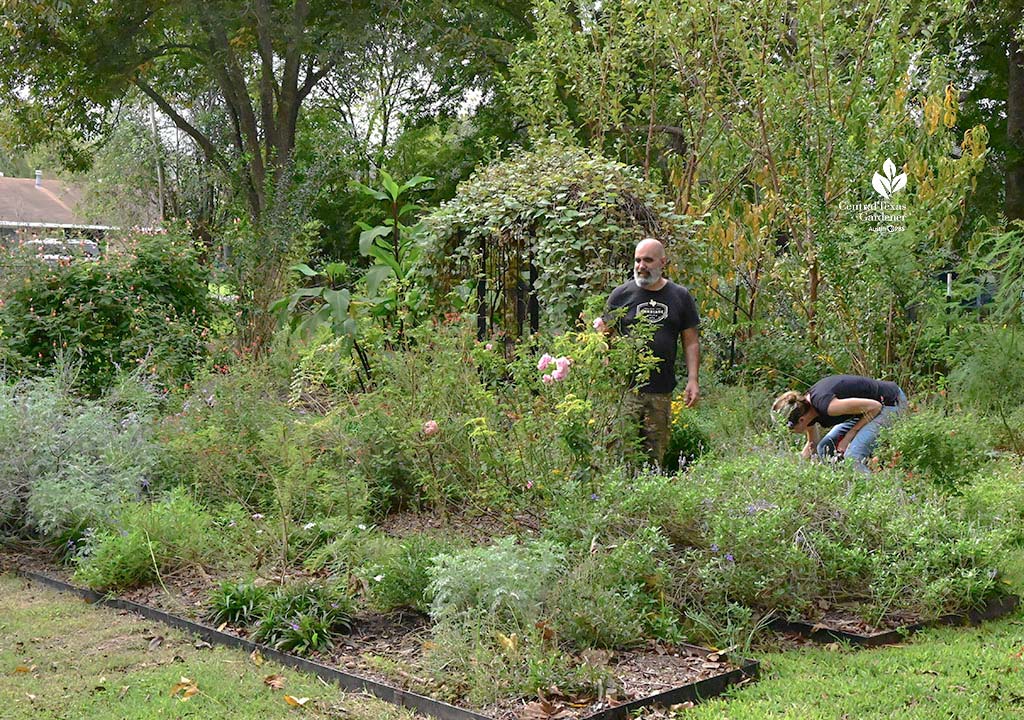
Adjacent beds host fragrance, edible perennials, and wildlife food, including roses, asters, Mexican mint marigold, Turk’s cap, and salvias of all kinds. “The other thing I found with gardening is you make it beautiful, then there’s a reason for you to be out there,” Donna said. “And I love this. I think of it as a little waystation for insects that they can come and everyone’s welcome here. And I try to have something for everyone to munch on.”
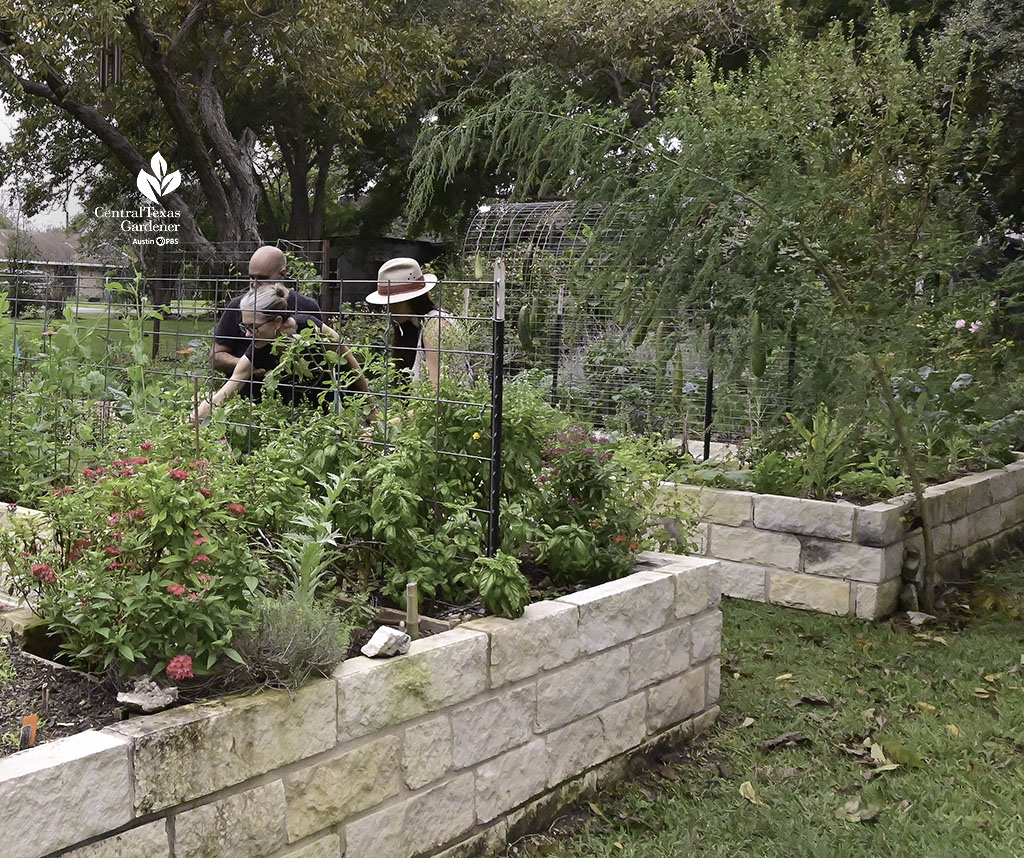
Seasonal annuals join perennials in the raised beds, where Donna mixes herbs, flowers, and vegetables. One of her favorite edibles—lamb’s quarters—towers nearby. She welcomes its random seeding out. In fact, that’s where she’s going with gardening: happy accidents. “If things want to volunteer, that’s a free source of food. I’m not going to pull that volunteer out. I’m going to say thanks,” she said.
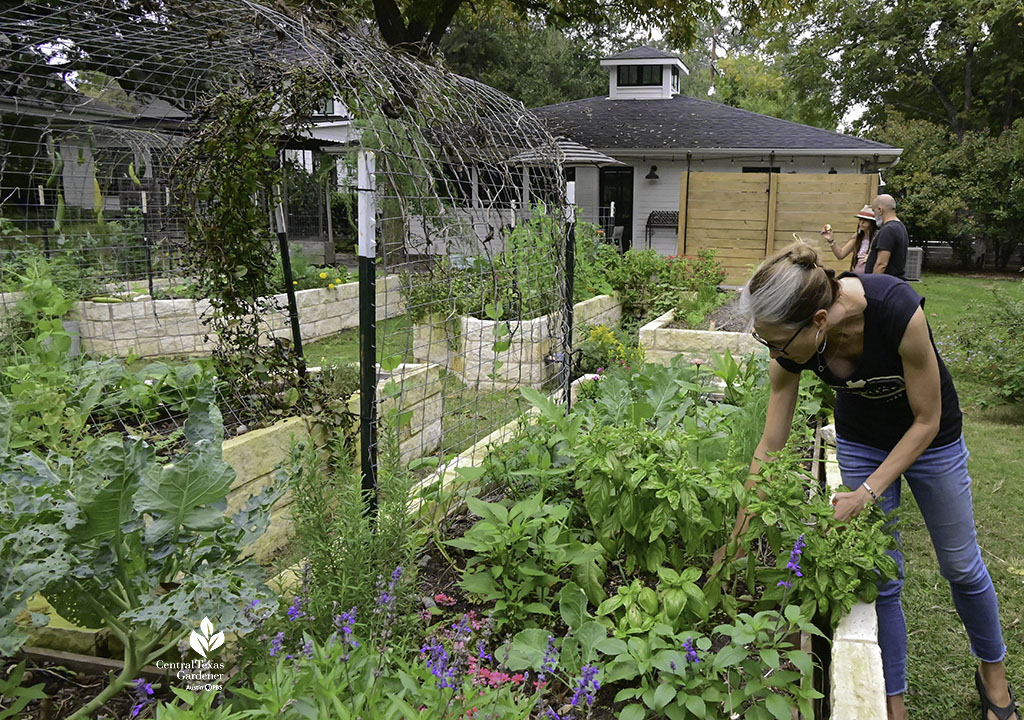
And in Texas, she’s happy to harvest summer’s basil while cool weather seedlings grow up.
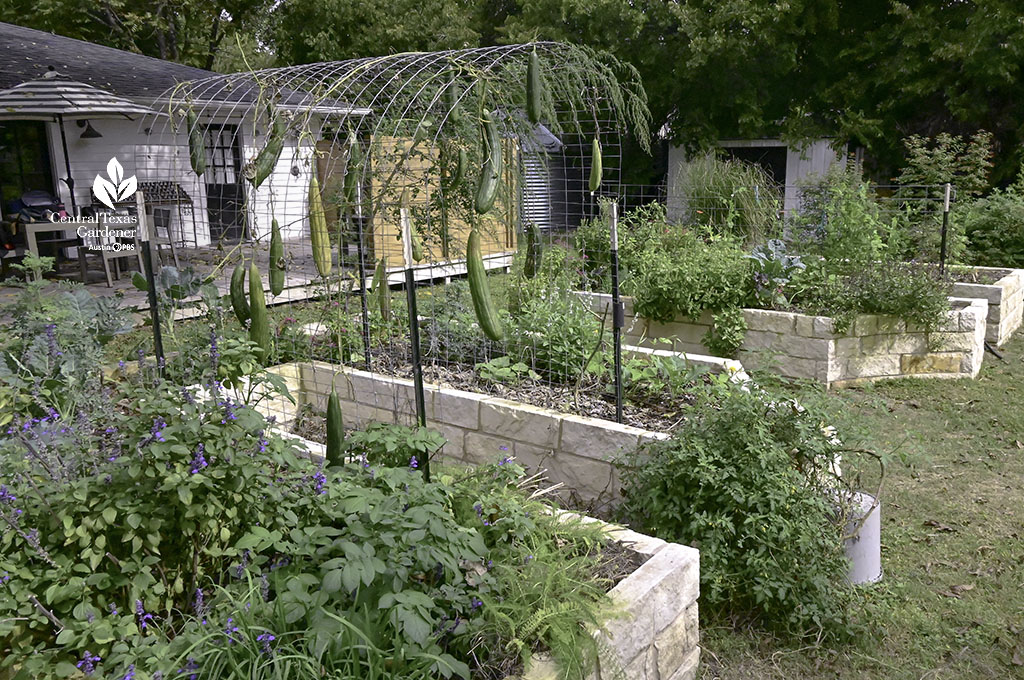
Vertical gardening maximizes space, including for these summertime luffas that she was letting dry naturally after composting their spent vines. But, in a cost-saving moment, she went for fencing that works for luffas and other light crops. As it turned out, not such a good idea for hefty pumpkins!
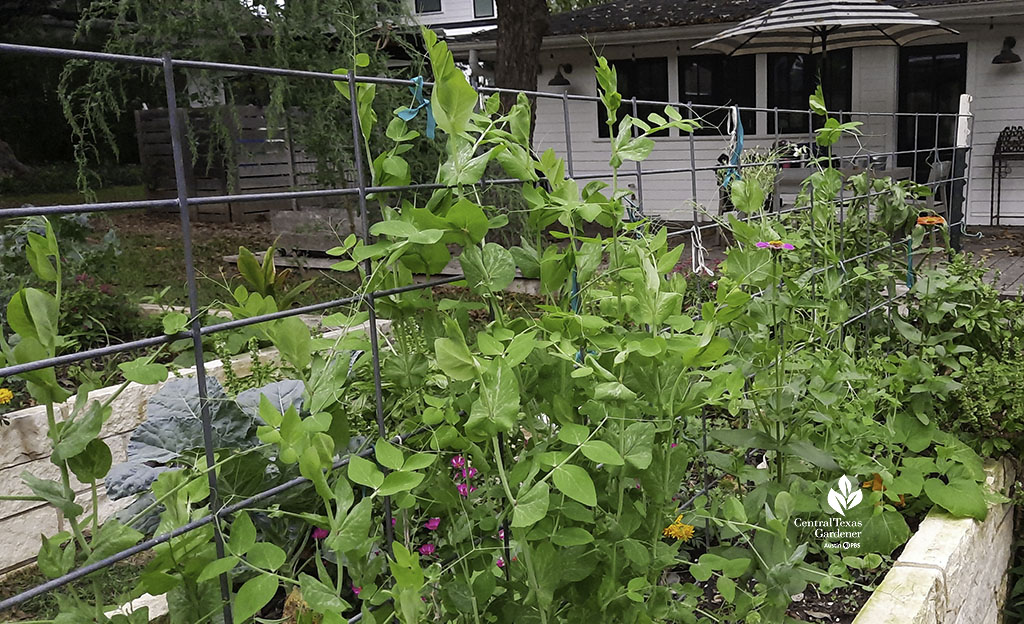
Now, she’s added sturdier cattle panel for the heavyweights. In cool weather, they support this year’s peas—though fencing or a tomato cage works for peas, too.
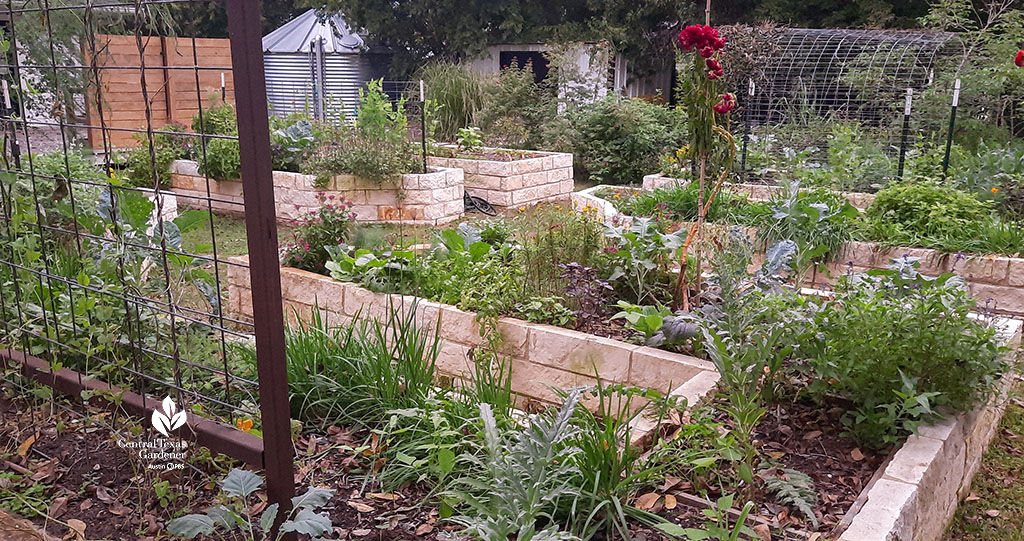
A final infrastructure project: installing a 10,000-gallon cistern to irrigate the food forest and raised beds.
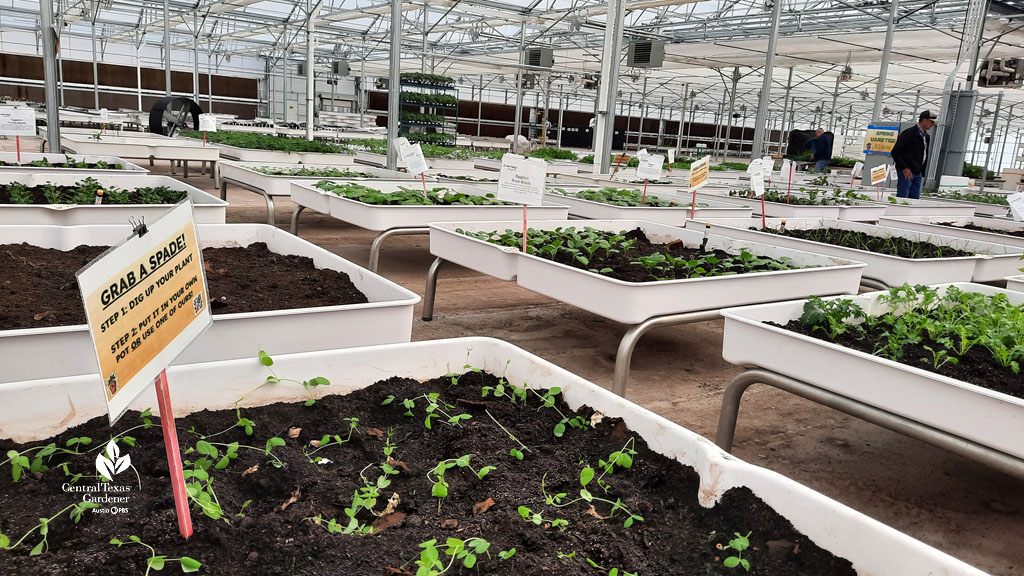
On our visit, Donna praised Inevitable Tech, an indoor-grower using resourceful methods to supply plants to growers and nurseries. They also open to the public for “dig your own” seedlings, many for just $2.00.
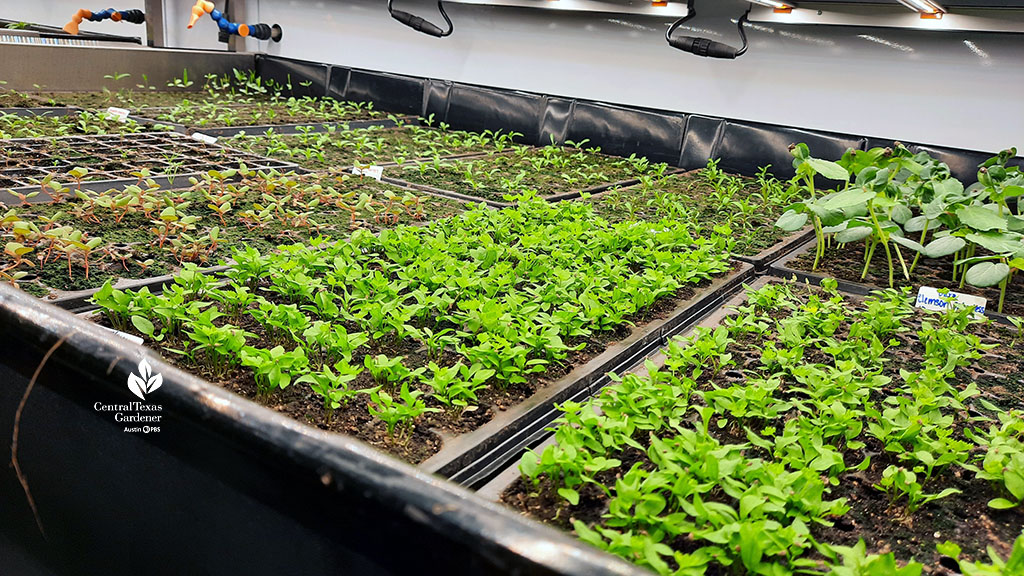
In late spring, my husband and I made a day trip to Lockhart for a quick tour of the climate-controlled facility where they grow seasonal vegetables, herbs and flowers.
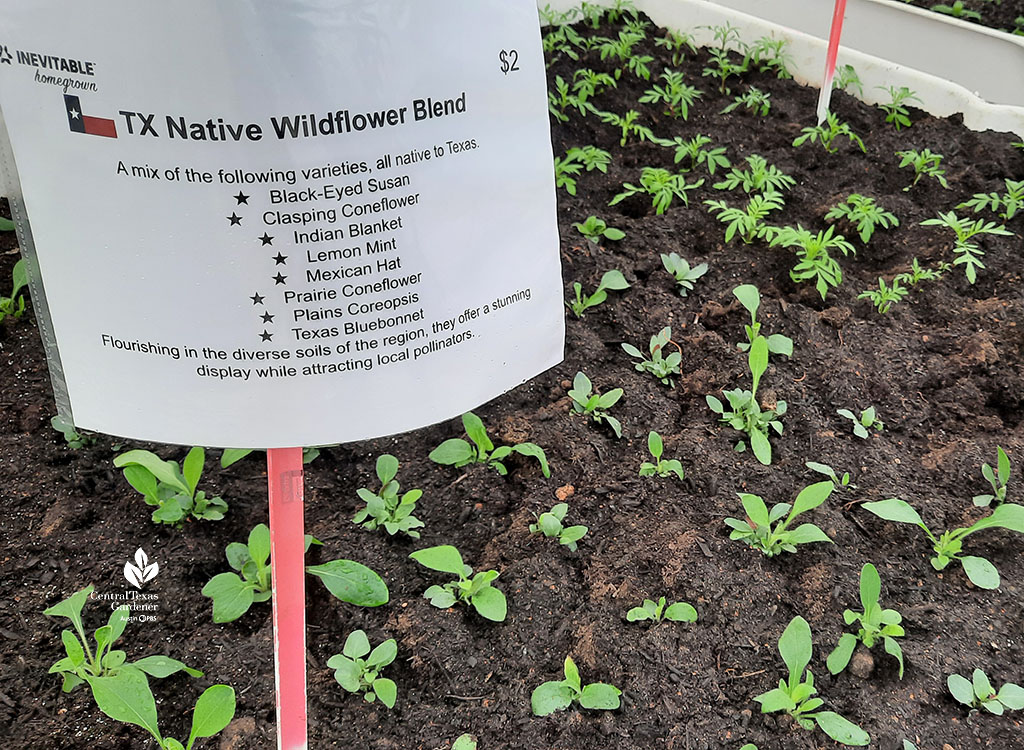
Even native plants!
Watch now!
Thanks for stopping by! Linda
tags:







